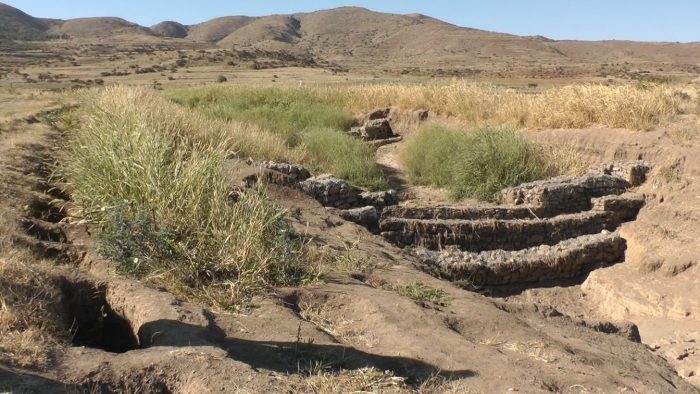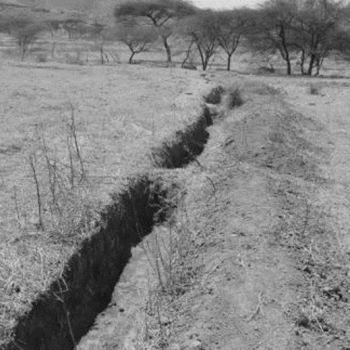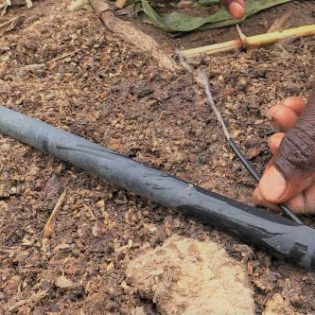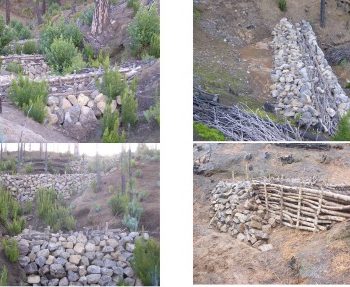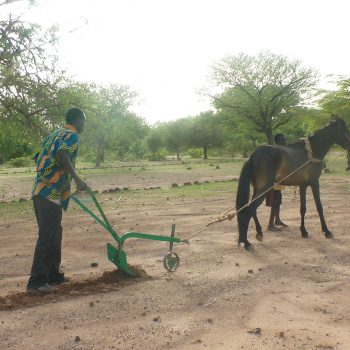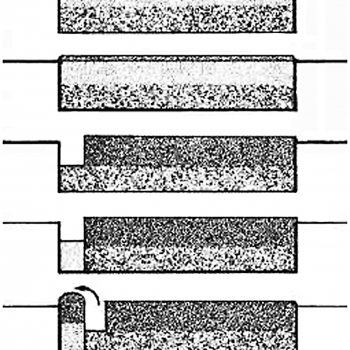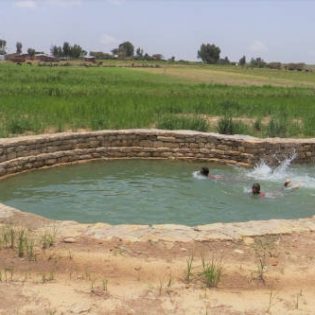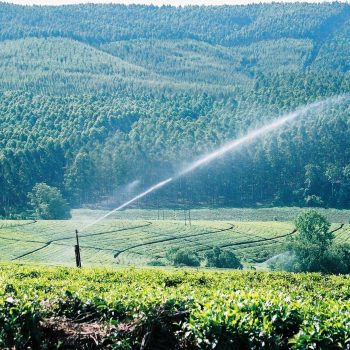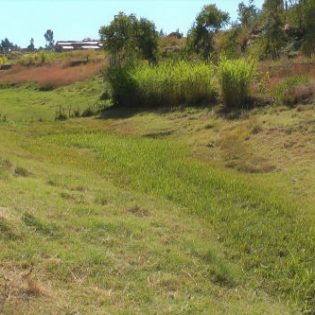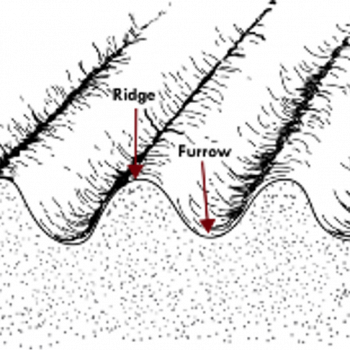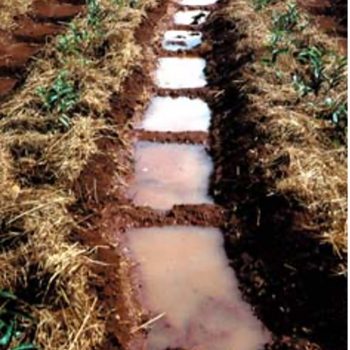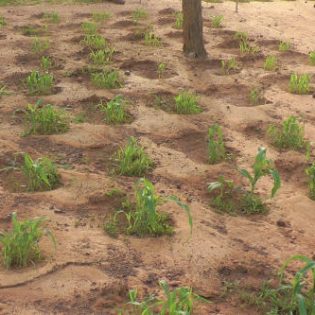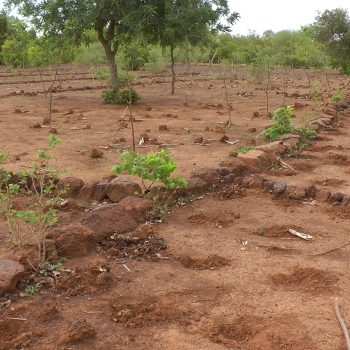In non-humid regions earth plugs can be used to restore gullied areas. The gully should preferably not be steeper than 10% or deeper than 2 m. In more humid areas diversion channels may be added to decrease the burden on the gully plug structure (Geyik, 1986). When stones are readily available stone check dams can be constructed to restore small gullies. The trapped sediments can be used as arable land, which can provide additional income to the farmers (Desta et al., 2005). Preferably flat stones are used as they add more strength.
Brushwood check dams are constructed across gullies with width less than 3 m and slope length less than 100 m. Plant materials are stacked behind a series of wooden posts that are driven deep into the soil. Brushwood from species that propagate vegetatively from cuttings is ideal to use as the roots encourage consolidation of the structure and the soil (Desta et al., 2005). After few years the established stems-plants can be pruned providing fodder and fuel (Liniger & Critchley, 2007). Once the check dam structure is in place, gully reshaping is required to ease plant establishment.
In case of big gullies, a sediment storage and overflow dam can be used. The overflow dam is a stone-faced earthen dam that traps sediments and creates new farming land. It also acts as a rainwater collector, improving water availability for crops. It can potentially create new land and restore eroded landscapes (Desta et al., 2005).
| References: | Knoop, L., Sambalino, F., & van Steenbergen, F. (2012). Securing Water and Land in the Tana Basin: a resource book for water managers and practitioners. The Netherlands: 3R Water Secretariat.
Geyik, M. (1986). FAO watershed management field manual. Gully control. FAO Conservation Guide (FAO). Liniger, H., & Critchley, W. (2007). Where the land is greener: Case-studies and analysis of soil and water conservation initiatives worldwide. CTA/CDE/FAO/UNEP/WOCAT. Desta, L., Volli C., Asrat W-A., and Yitayew A., 2005. “Community-based participatory watershed development. a guideline. annex.” |
Additional information
| (semi) Natural unused areas | (semi) Natural unused areas |
|---|---|
| Agriculture | Flood/spate irrigated, Irrigated |
